BenQ XL2720T Gaming Monitor Reviewed
by Chris Heinonen on June 17, 2013 4:35 PM ESTI calibrate every monitor using CalMAN V5 with an i1Pro spectrometer and a SpectraCal C6 colorimeter. Our first calibration target is for 200 nits of light output, the sRGB color gamut, and a power gamma of 2.2. For the calibration I used the Standard mode on the monitor, as that allowed access to the User Color Temperature control, which let me set 100% white correctly without using the video card LUT.
Using this setup, our grayscale really comes into line on the BenQ. Our average error is really non-existent, other than at 0 which we can’t fix, and I can’t exclude from this chart or I would. The color tint has been totally eliminated, and the gamma is almost spot-on. Our contrast ratio has risen to 820:1, a 16% increase in what is often the most important element of an image overall. As far as grayscale goes, this is essentially perfect.
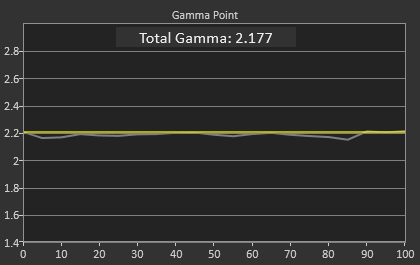
On the color side we see some improvement, but this is mostly due to the improvement in the grayscale. SpectraCal is going to improve CalMAN to remove White from the Gamut dE2000 number, to provide a more accurate data point on how much color error was improved in the future. The red primary is a little under-saturated and green is a little low in luminance, both errors that calibration can’t correct. The color gamut is good, but not excellent.
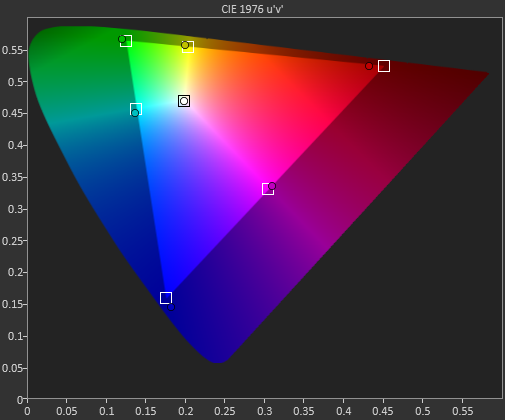
The Colorchecker data is better, but also not perfect here. The formerly high luminance has now been fixed, and luminance is nearly perfect. Those orange-yellow shades continue to cause issues however, with errors close to 3, and the same goes for a shade of blue that lies on the edge of the sRGB gamut. The numbers are much better than before but not as good as some other displays, especially on those orange-yellow colors.

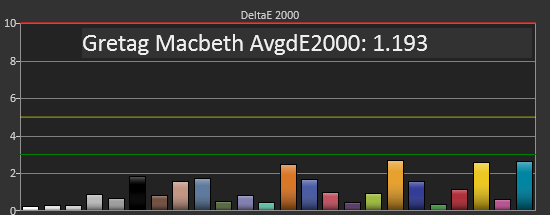

After calibration the saturations are almost worse at 100%, but better below that. Some people disagree on if it is better to have 100% saturation fixed or the values below that have a lower error, but overall the values are better than they were before calibration.
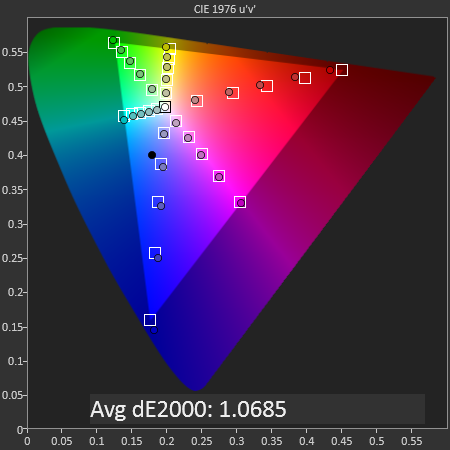
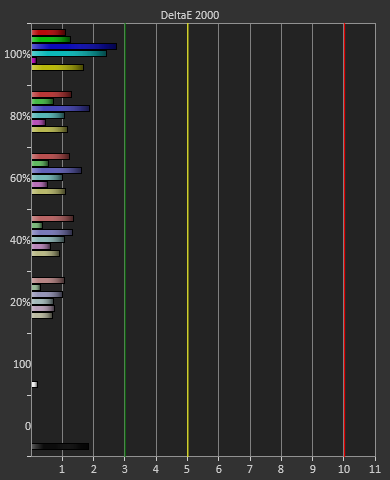
Post calibration, the BenQ is certainly better than it was before it. It is virtually perfect in the grayscale, but the gamut doesn’t improve that much as the issues it has are ones that calibration can’t fix, as calibration can’t add luminance or saturation that isn’t there to begin with. I was happy to see how much the BenQ improved, and you can do much better than the preset sRGB mode.


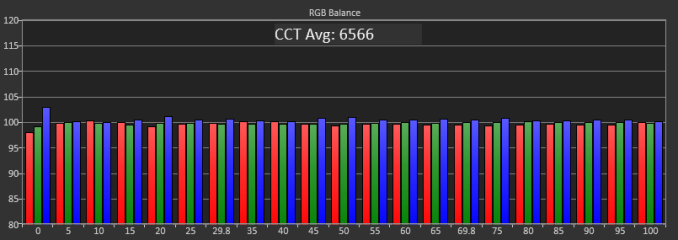
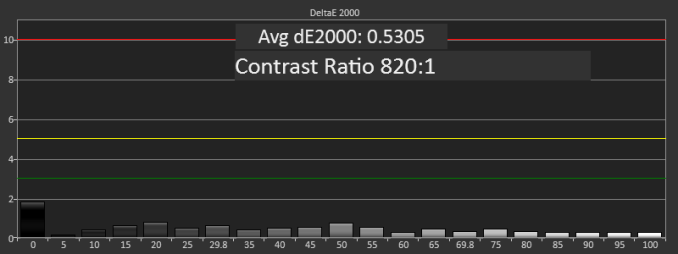










79 Comments
View All Comments
blackoctagon - Friday, June 21, 2013 - link
Thank you for the clarificationDraconian - Tuesday, June 18, 2013 - link
Why do they make these gaming monitors so big? 1080p at 27"? The pixel size is huge.Make a 23" version and I'd be interested in it.
birru - Tuesday, June 18, 2013 - link
They make 24" versions too, the XL2420T and XL2420TX.chizow - Tuesday, June 18, 2013 - link
The original 1080p 120Hz models were 23", too small, especially for 3D. I upgraded to a 27" 1080p and the pixel size is fine, small price to pay for the huge increase in screen size.mdrejhon - Wednesday, June 19, 2013 - link
I just noticed charts being posted for LightBoost measurements.Good for you AT -- much needed tests.
Which drivers did you use? People reported better LightBoost color quality from nVidia 320.18 drivers than older drivers -- so we're curious which driver you tested with.
cheinonen - Wednesday, June 19, 2013 - link
I used the most recent drivers from NVIDIA. I'd have to double-check the version, but I try to keep them up-to-date as much as possible.mdrejhon - Friday, June 28, 2013 - link
Good news. The easy LightBoost system tray just came out.http://www.blurbusters.com/easy-lightboost-toastyx...
-- It works great on surround 120Hz setups;
-- It allows you to turn ON/OFF LightBoost via an easy hotkey.
-- It also allows you to adjust LightBoost percentage settings.
qiplayer - Sunday, November 3, 2013 - link
This is a gaming monitor please review it as that. There are thousands of monitors that are good for else and a few 27 that are good for gaming. If I and others are here it's probably to know about that.qiplayer - Sunday, November 3, 2013 - link
So 1ms response time and 22ms of imput lag ... it appears you are not the only one that has no idea of what performance it should have. To make a comparison 22ms is also a good ping, but ping isn't interferring with the coordination hand-eyes. A good input lag would be less than 10ms.It is relevant and you notice it in game when you turn fast from one side to the other, the image turns later than what you do with the mouse. About expensiveness I own a rig worth about 5-6000$, and I'm looking for 3 120hz screens. Too bad there aren't any 2500x1600 one's. The problem isn't about money but about stuff that works, like a cpu overclocked that it doesn't bottleneck 3titans. And by reading reviews of 10, 1or 2 have sense, for example there are people that test a 1000$gpu on a 1280x720 monitor and all kind of such staff
Going back to the imput lag, my monitor has one of 18 seconds and 60hz. So I'm disappointed because when they go down with pixel responsiveness and double the hz it would only have sense to work much also on the input lag. This is needed when making 2 kills in a second and not wanting to be killed from the 3rd player ;)